Reeves Callaway builds one of the fastest and most exclusive cars in the world, the 302kph Callaway C12. Never seen one? It's not surprising; only 26 of them exist.
At the heart of the C12 is a Corvette, with a 440hp version of a Corvette engine.
But the C12 is lower, sleeker and more exotic than a Corvette, with body panels made in Germany and sculptured to create an aggressive feline crouch. It can zoom from zero to 60mph (97kph) in a heart-stopping 4.5 seconds, and four-piston disc brakes stop it almost as quickly.
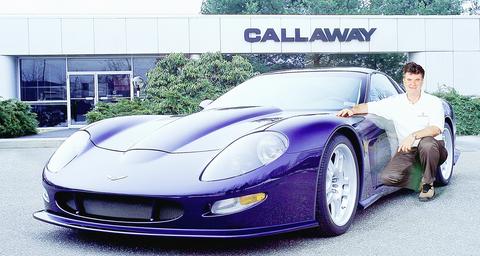
PHOTO: NY TIMES
Driving a C12 (Andrew J. McKelvey, the chief executive of TMP Worldwide, an advertising and corporate staffing company, was gracious enough to lend his for a brief spin) is both exhilarating and nerve-racking. It roars as it moves down a Manhattan avenue, but it is surprisingly docile while waiting out the red lights. When there is a chance to open it up a bit, its driver learns how quickly another vehicle far ahead can become an imminent obstacle.
Callaway would like to sell more C12s, though he is not willing to bring down the US$225,000 price. They are a sideline to his basic business: Modifying cars for companies like Ford and General Motors to make them go faster -- a lot faster.
Automakers busy churning out high-volume models often don't have time to develop limited-edition, high-performance versions, but those are the cars that attract breathless publicity, and their luster can give a manufacturer both prestige and that valuable public approval known as street cred.
The phrase "Race on Sunday, sell on Monday" is as old as the car business. So the companies hire people like Callaway to take popular models -- like the Corvette, his specialty -- and modify them with more powerful engines, lighter and more aerodynamic bodies, some of the biggest brakes on the planet, advanced suspension designs and special road-gripping tires.
Callaway's company, Callaway Cars, is based in Old Lyme, Connecticut, and about to expand to Orange County, California. Its two buildings in Old Lyme amount to 1,672m2 and look more like corporate offices than palaces of speed, though the parking lot holds its share of exotica.
Where you might expect to find greasy engines dripping oil onto a scarred concrete floor, you see surgically clean white rooms with polished engines sitting on test beds, wired to banks of computers. The staff of 40 walks around in Dockers and polo shirts with the Callaway logo. Callaway spends much of his time looking for new business. "That's why we're expanding to California," he said. Orange County is where many of the Japanese and European companies have their American headquarters.
Callaway, 54, is the son of Ely Callaway (who introduced the Big Bertha golf club) and, since 2000, the husband of Sue Callaway, a onetime Jaguar North America executive and Fortune magazine auto writer who is now expecting the couple's first child.
He was an open-wheel Formula Vee racing driver in the early 1970s and won a national championship in 1973, but was diverted into modifying sports cars after fitting a turbocharger to a BMW 320i he had used for teaching racing. A one-page article about it appeared in Car and Driver magazine in 1977, and soon other BMW owners were looking for him. Callaway Cars became a serious business.
In 1984, with the blessing of Alfa Romeo's US distributor, Callaway added not one but two turbochargers to the Alfa GTV6, which had been selling slowly in the US. The 154hpengine was transformed into a 230-horsepower screamer that could rocket the car to 60mph in 5.9 seconds.
The car was sold for US$24,000 as the Callaway Twin Turbo and got rave reviews in automobile magazines. That caught the attention of Chevrolet and led directly to a deal to build the 191mph Twin Turbo Corvette.
More than 500 of them were sold through Chevrolet dealers from 1986 to 1991.
Since then, Callaway has tuned engines for Aston Martin, Mazda, Land Rover and the Australian automaker Holden. The Land Rover connection resulted in a run of 220 high-performance, 240-horsepower versions of the Range Rover 4.6 HSE and a supercharged version of the Freelander that has remained a show car.
Though Jaguar and Land Rover are joined in Ford's Premier Automotive Group, Callaway said his wife had nothing to do with his Land Rover deal.
"Sue wasn't involved," he said. "They keep their brand identities strictly separate at Ford."
Callaway loses money on his star car, the C12, he said.
"You'd think we could sneak a few dollars' profit from the car, wouldn't you?"
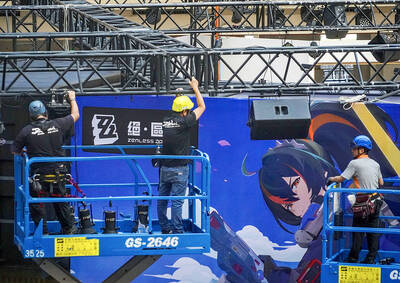
Taiwan is projected to lose a working-age population of about 6.67 million people in two waves of retirement in the coming years, as the nation confronts accelerating demographic decline and a shortage of younger workers to take their place, the Ministry of the Interior said. Taiwan experienced its largest baby boom between 1958 and 1966, when the population grew by 3.78 million, followed by a second surge of 2.89 million between 1976 and 1982, ministry data showed. In 2023, the first of those baby boom generations — those born in the late 1950s and early 1960s — began to enter retirement, triggering
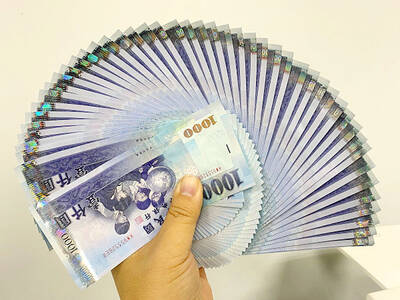
ECONOMIC BOOST: Should the more than 23 million people eligible for the NT$10,000 handouts spend them the same way as in 2023, GDP could rise 0.5 percent, an official said Universal cash handouts of NT$10,000 (US$330) are to be disbursed late next month at the earliest — including to permanent residents and foreign residents married to Taiwanese — pending legislative approval, the Ministry of Finance said yesterday. The Executive Yuan yesterday approved the Special Act for Strengthening Economic, Social and National Security Resilience in Response to International Circumstances (因應國際情勢強化經濟社會及民生國安韌性特別條例). The NT$550 billion special budget includes NT$236 billion for the cash handouts, plus an additional NT$20 billion set aside as reserve funds, expected to be used to support industries. Handouts might begin one month after the bill is promulgated and would be completed within
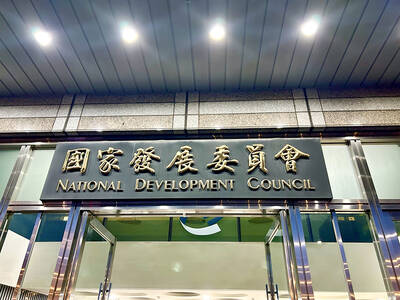
The National Development Council (NDC) yesterday unveiled details of new regulations that ease restrictions on foreigners working or living in Taiwan, as part of a bid to attract skilled workers from abroad. The regulations, which could go into effect in the first quarter of next year, stem from amendments to the Act for the Recruitment and Employment of Foreign Professionals (外國專業人才延攬及僱用法) passed by lawmakers on Aug. 29. Students categorized as “overseas compatriots” would be allowed to stay and work in Taiwan in the two years after their graduation without obtaining additional permits, doing away with the evaluation process that is currently required,
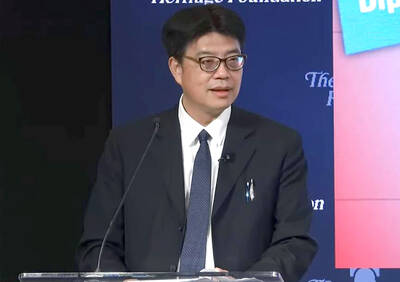
IMPORTANT BACKER: China seeks to expel US influence from the Indo-Pacific region and supplant Washington as the global leader, MAC Minister Chiu Chui-cheng said China is preparing for war to seize Taiwan, Mainland Affairs Council (MAC) Minister Chiu Chui-cheng (邱垂正) said in Washington on Friday, warning that Taiwan’s fall would trigger a regional “domino effect” endangering US security. In a speech titled “Maintaining the Peaceful and Stable Status Quo Across the Taiwan Strait is in Line with the Shared Interests of Taiwan and the United States,” Chiu said Taiwan’s strategic importance is “closely tied” to US interests. Geopolitically, Taiwan sits in a “core position” in the first island chain — an arc stretching from Japan, through Taiwan and the Philippines, to Borneo, which is shared by